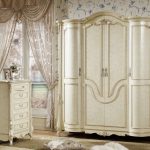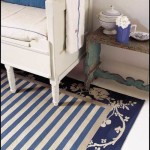Interior design has been existing for thousands of years now. Its main purpose is to enhance the aesthetics of a space and make it more pleasant to the eye. In the early 19th century, people started taking interior design seriously, and its possibilities were being available to everyone, not just the royals and upper classes. With the arrival of the 20th-century, functionality stepped in, and new styles were on the rise.
Mixing and matching patterns and colours was done to show attitude, floral prints and wallpapers made the homes more welcoming, shag carpeting brought the ‘groove’ and sponge painting the walls was the next big thing. Interior design trends have changed dramatically through history, and they still are evolving. The possibilities are endless when combining colour, patterns, and materials to create a space that is not only beautiful but also practical.
Minimalist Interior Design

Minimalism has first appeared in the 1959s, and today, it’s an inseparable part of the home interior worldwide. The point of this style is to get rid of the clutter in the house and leave the basic necessities. It sets itself apart from the other styles with its simple, clean lines, and the accent is on the monochromatic colour palette. Lots of lighting, open floor and functionality are always there, focusing on colour, shape and texture. The minimalist elements enhance the elegancy, modesty and beauty of the home.
Simple and Efficient
A minimalist room should be simple and aesthetically pleasing when you look at a minimalist room. The space must be open and without any clutter or unnecessary accessories and furniture. Forms and shapes are supposed to be simple, and geometric shapes will do the trick. Keeping the furniture minimal with colours and quantity can only contribute to the beauty of the space.
The room gets even bigger and more refined with large, open and smooth floors made from natural materials. A neatly combined storage space with straight clean lines will only accentuate the calmness of the area. Of course, light is essential, so if you have a significant natural light source, make the most of it. This will help provide a warm and cosy space instead of being cold and sterile. Let the view speak for itself.
Monochrome Neutral Colours

The base for minimalism is the neutral colour pallet of greys, whites and beiges. When you reduce the diversity of colours, the design will gain simplicity. You can amplify their effect by using them in different materials. Cotton, wool, and cloth can help you with pillows, covers, and glass, and pottery can be used in accessories.
Rich, traditional textures like these are a big part of minimalism. Adding other colours depends on the preference of the homeowner. They can freshen up the place if used properly. You can incorporate colours with the help of a stunning home decor item like throw pillows, rugs, or you can even use candles as decoration.
Leave the Essentials
If you want to transform your home into a minimalistic one, be ready to get rid of some stuff. The point is not to clutter the space but empty it as much as possible and leave just the essentials. Take a day or two, look at all of your possessions, decide what you need and what is useful, and let go of the rest. In true minimalism, quality is always above quantity. A handful of good quality elements means less time spent cleaning and a calm and soothing environment.
Less Is More
Walls with light colours are a blank canvas for decoration. With this style, you can let a single piece of art on the wall dominate the space. You can go with a long geometrical TV unit with just the TV and maybe a refined sculpture of your favourite designer. Add a simple glass vase with fresh flowers for a pop of colour on the coffee table or a sideboard decorated with a couple of candles. Less is more, don’t overdo the home decor because the style will lose its refinement and beauty.
Boho Interior Design

Contrary to modern or minimalist design, the bohemian interior doesn’t follow strict rules. It represents carefree patterns, colours and textures. It is styled and designed for your enjoyment to create a place where you can relax. It encourages maximalism and self-expression through colours, patterns and textures. Its beginnings are in the 19th century in Paris, France. The original bohemians who started and developed this style are artists, performers and nomads. They valued creativity over money and remained faithful to that statement. This attitude brought many changes and innovations in interior design that remain today.
Colour Palette and Textures
Because there aren’t any standard colour schemes you should follow, the opportunities are endless with bohemian style. You want a clean look with a neutral base, no problem, a bolder style with vivid colours, go at it, or maybe somewhere in the middle with a combination of the two is your cup of tea. Whatever choice you make, you won’t regret it, and it’ll look gorgeous. The boho ambience can be filled with metallic golds, emerald greens, ruby reds, vivid pink or royal blues, really anything you want.
You can even darken the walls and decorate them with bright coloured details, or use the white walls as a blank page to fill it with patterns and textures you find aesthetically pleasing. The colours can be expressed on the carpets and rugs as well. Besides being soft and comfortable, rugs can be filled with an attitude of patterns and colours. Persian and Turkish kilims will fit the best with their geometry of stripes, diamonds and medallions.
Diverse Design
In bohemian style, there is no such thing as too much. It revolves around art, music and literature and is designed for personal interest. The objects and decorations it has, are connected to your memories and experiences with friends and family, representing your life and your story. It can be complicated or clean; you make the rules and decide which home décor item will stand out.
Any furniture will work, floor cushions, standard sofas, every material and shape. It’s usually made from natural materials and stands low to the ground—rattan chairs with embroidered pillows, short coffee tables with handmade covers or clay vases with odd patterns. And in terms of lighting, candles, table lamps, lanterns and pendants will fit perfectly and create that bohemian ambience.
Think Handmade and Natural

Because artists and nomads create it, it’s understandable that this style leans toward the handmade and natural elements. Paintings, sculptures, lampshades, woven rugs and wicker baskets can complement the interior of your home. It’s a great way to support local artists and crafters. Wood has many purposes and can take many shapes, so choosing it as the primary material for your design will be a good decision.
Don’t forget about plants. They not only bring the natural element to the house but provide us with better air quality. You can use any plant you want, cactuses, succulents, snake plants and dracaenas, or if you’re going to go in height, devil’s ivy or spider plants will have that effect. You can play with the pots and planters. Put them on the floor or the table, stack them on the wall and create a cascade of draping greenery. Plants will make you relaxed, lift your spirit and are good for the planet.
To Summarise
After comparing these two utterly different interior designs and styles, we can see that they have unique characteristics and are not for everyone. The next time you buy décor and decide to change the appearance of your home, think about these designs and the freedom of expression they provide.





















